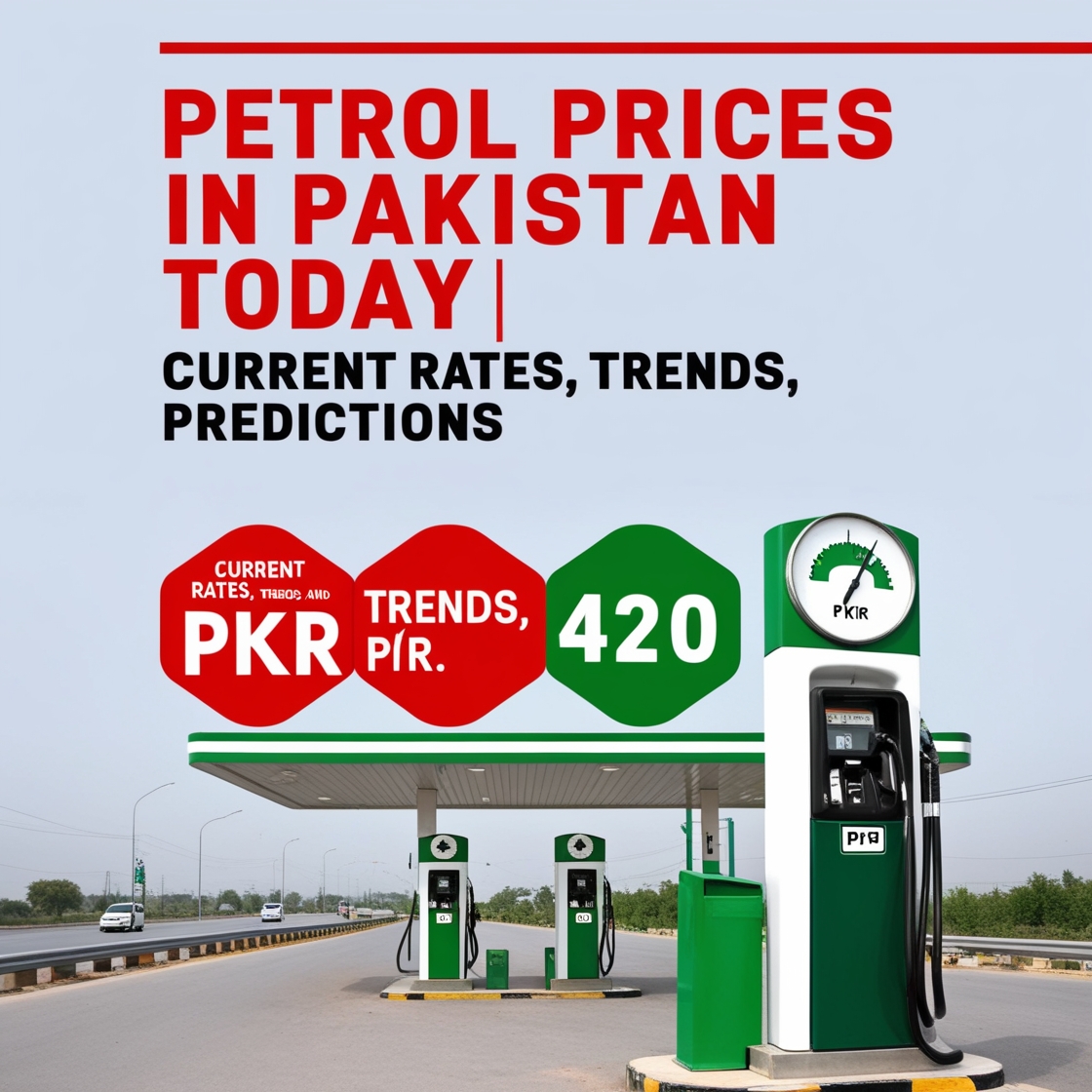Petrol prices in Pakistan significantly shape the country’s economy and directly impact the daily lives of millions. As petrol serves as the primary fuel source for transportation, any fluctuations in its price affect not only individual consumers but also various sectors of the economy.
For instance, higher petrol costs lead to increased transportation expenses, which, in turn, drive up the prices of goods and services, affecting everything from groceries to essential services. Moreover, as a largely import-dependent nation for petroleum, Pakistan is highly vulnerable to international oil market shifts, making petrol prices a sensitive issue for the government and the public.
Petrol prices in Pakistan are not only an economic concern but are also closely tied to political and social stability. When prices rise, they strain household budgets, often causing financial stress for families. Conversely, any reduction in fuel prices can offer temporary relief, boosting disposable income and consumer spending.
This dynamic makes petrol prices a topic of continuous interest and importance for Pakistan’s citizens, who look to stay informed on the latest developments.
Table of Contents
Importance of Monitoring Petrol Prices Today
Staying updated on petrol prices in Pakistan has become more important than ever, especially as prices have recently increased volatility. With global economic uncertainties and fluctuations in the oil market, changes in petrol prices have become more frequent, sometimes shifting monthly or bi-weekly.
Understanding the current petrol price can assist Pakistani households, businesses, and commuters in budgeting, planning daily expenses, and adjusting travel choices to manage costs effectively.
The impact of petrol prices also extends to broader financial planning, as price hikes can trigger inflation, affecting the costs of essential commodities. By monitoring the petrol price in Pakistan today, individuals can anticipate upcoming financial challenges and plan accordingly.
For instance, a commuter who regularly drives may consider carpooling or using public transport in response to rising prices, while businesses may make strategic adjustments to transportation logistics.
Current Petrol Price in Pakistan
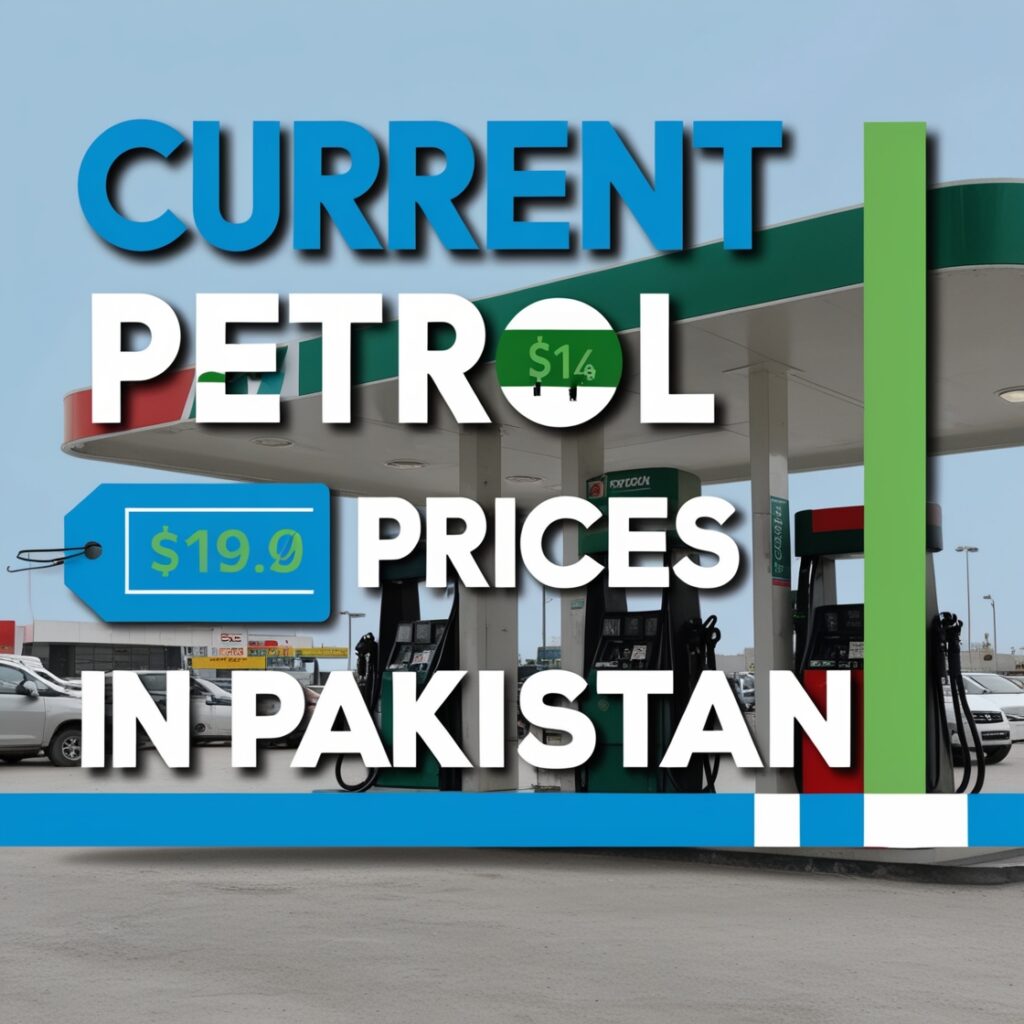
Today’s Petrol Price
The current petrol price in Pakistan is PKR 248.38 per liter. This figure reflects the government’s most recent adjustments, which are influenced by local and global economic factors. Monitoring the petrol price is essential for consumers, as any fluctuations can significantly impact daily expenses and transportation costs.
Breakdown by City
The price of petrol can vary slightly from city to city due to regional taxes and transportation costs. Below is a summary of the current petrol prices in some major cities across Pakistan:
| City | Petrol Price (PKR per Litre) |
|---|---|
| Karachi | 248.38 |
| Lahore | 248.38 |
| Islamabad | 248.38 |
| Peshawar | 248.38 |
| Quetta | 248.38 |
- Karachi: As the largest city and economic hub, Karachi maintains a petrol price of PKR 248.38 per litre. This is comparable to the national average but subject to minor fluctuations based on local market conditions.
- Lahore: The capital of Punjab, Lahore, has seen a slight increase in petrol prices, currently at PKR 248.38 per litre. This increase is attributed to higher transportation costs associated with bringing fuel into the city.
- Islamabad: The federal capital’s petrol price, PKR 248.38 per litre, reflects the national average, indicating a stable pricing strategy.
- Peshawar and Quetta: These cities have prices slightly higher than the average, with PKR 299 and PKR 300 per litre, respectively, due to logistical costs and local government taxes.
Comparison with Diesel and High-Octane Prices
It’s also important to consider how petrol prices stack up against diesel and high-octane fuels. Here’s a brief comparison:
| Fuel Type | Price (PKR per Litre) |
|---|---|
| Petrol | 248.38 |
| High-Octane (HOBC) | 258.88 |
| Diesel | 255.14 |
- Diesel: Currently priced at PKR 255.14 per litre, diesel fuel is slightly cheaper than petrol. This price point is significant for consumers relying on diesel for transportation or commercial vehicles, as it can affect the economy’s overall cost of goods and services.
- High-Octane (HOBC): At PKR 258.88 per litre, high-octane fuel is notably more expensive than standard petrol. This price difference reflects high-octane fuel’s premium nature, favoured by high-performance vehicles and engines requiring higher compression ratios.
Understanding the current petrol price in Pakistan, variations across major cities, and comparisons with diesel and high-octane prices is crucial for consumers and businesses. As prices fluctuate frequently due to various factors, staying informed about these changes is beneficial, allowing for better financial planning and budgeting.
For the latest updates on petrol prices, regularly check The Price in Pakistan, which provides comprehensive and up-to-date information.
Factors Affecting Petrol Prices in Pakistan

Various factors intertwine local conditions with global market trends, influencing petrol prices in Pakistan. Understanding these factors is crucial for consumers and businesses alike, as they directly impact the cost of living and operational expenses. Here, we explore the three main elements that significantly affect petrol prices in Pakistan: global oil market trends, government policies and taxes, and exchange rate fluctuations.
Global Oil Market Trends
One of Pakistan’s primary drivers of petrol prices is the global oil market. Crude oil prices in the international market fluctuate based on supply and demand dynamics.
- Supply and Demand: The price per barrel tends to decrease when global oil supply increases due to factors like new oil field discoveries or higher production rates from major oil-exporting countries. Conversely, geopolitical tensions, natural disasters, or OPEC (Organization of the Petroleum Exporting Countries) production cuts can lead to supply shortages, driving prices up.
- Market Speculation: Traders in international markets also speculate on future prices based on news events, economic reports, and market sentiment. For instance, if there’s anticipation of conflict in oil-rich regions, prices may rise even before any supply disruption occurs.
- Impact on Local Prices: Since Pakistan imports most of its crude oil, these international price changes directly translate to local petrol prices. When global prices rise, the cost of petrol in Pakistan usually follows suit, affecting consumers’ budgets and overall economic conditions.
Government Policies and Taxes
Government policies play a critical role in determining petrol prices in Pakistan. The government’s approach to levies, taxes, and subsidies can lead to significant variations in retail prices.
- Taxes and Levies: The Pakistani government imposes several taxes on petrol, including customs duties, petroleum development levies, and sales taxes. These taxes can account for a substantial portion of the final retail price. For example, when the government increases taxes, petrol prices at the pump often increase.
- Subsidies: The government may implement subsidies to cushion consumers from rising global prices. This involves temporarily absorbing some of the costs to stabilize petrol prices, which can be a double-edged sword. While subsidies help consumers in the short term, they can lead to increased national debt or budget deficits if maintained for extended periods.
- Regulatory Decisions: The government’s regulatory body, the Oil and Gas Regulatory Authority (OGRA), often reviews and adjusts petrol prices every month based on these factors. Their decisions can result in sudden price changes impacting consumers and businesses.
Exchange Rate Influence
The exchange rate between the Pakistani Rupee (PKR) and the US Dollar (USD) is another significant factor affecting petrol prices.
- Import Costs: Since oil is traded in dollars, a weaker PKR means that Pakistan has to spend more rupees to purchase the same amount of oil. For instance, if the rupee depreciates against the dollar, the import cost of crude oil rises, leading to increased petrol prices for consumers.
- Fluctuations and Volatility: The exchange rate can be highly volatile due to various factors, including political instability, economic performance, and trade balances. This volatility makes it challenging for businesses to plan for fuel costs, impacting pricing strategies across various sectors.
- Consumer Impact: As the exchange rate fluctuates, petrol prices can change unpredictably, affecting everything from transportation costs to goods prices. Consumers may find themselves paying more at the pump during periods of currency depreciation, which can strain their budgets.
Understanding the factors affecting petrol prices in Pakistan—global oil market trends, government policies and taxes, and exchange rate fluctuations—provides valuable insights into why prices rise and fall. By staying informed about these influences, consumers can better navigate the complexities of fuel pricing and its implications for their daily lives and economic conditions.
Recent Price Trends and Increases
Historical Price Comparison (Recent Years)
Looking at historical price trends is essential to fully understand Pakistan’s current petrol price landscape. Over the past few years, petrol prices have experienced considerable fluctuations influenced by various factors, including global oil prices, government policies, and market demand.
- Petrol Price in Pakistan 2024: The latest price of petrol is PKR 248.38 per liter. This is an increase compared to previous years, driven by rising international oil prices and the depreciation of the Pakistani Rupee against the US Dollar.
- Petrol Price in Pakistan 2021: The average petrol price in 2021 was significantly lower, around PKR 113 per litre. This stark difference highlights the dramatic changes in fuel prices over just a few years, primarily due to geopolitical tensions and supply chain disruptions.
By providing this historical context, readers can better appreciate petrol price volatility and how it has risen sharply from previous years.
Monthly/Yearly Trends and Major Increases/Decreases
When examining petrol prices on a monthly or yearly basis, several key trends and notable price changes emerge:
- Recent Data Analysis:
- On October 1, 2024, the petrol price was PKR 248.38, a significant jump from the previous month, indicating a PKR 10 increase from September 2024.
- Over the past year, petrol prices have escalated from around PKR 200 to the current rate, reflecting a steady upward trajectory.
- Diesel and High-Octane Price Trends:
- As of the latest updates, high-octane fuel prices are PKR 255.88 per litre, while diesel prices are PKR 255.14 per litre. These increases correlate closely with petrol price hikes and show rising fuel costs across different fuel types.
These trends illustrate the volatility of fuel prices in Pakistan and highlight how consumers may need to adjust their budgets accordingly as costs continue to fluctuate.
Impact of Recent Changes on Consumers
The increases in petrol prices have a tangible impact on the everyday lives of consumers in Pakistan:
- Rising Transportation Costs: With petrol prices now at PKR 248.38, individuals relying on personal vehicles for daily commutes face increased transportation expenses. This change often leads to higher overall living costs, as many families must allocate more of their budgets to fuel.
- Effect on Goods and Services: The rise in fuel prices has a cascading effect on the cost of goods and services. Businesses, particularly those in transportation and logistics, pass on increased fuel costs to consumers, resulting in higher prices for everyday essentials, including groceries and household items.
- Changes in Consumer Behavior: Many consumers may seek to adapt to the rising costs by reducing non-essential travel, carpooling, or using public transportation more frequently. Additionally, some may consider switching to more fuel-efficient vehicles or exploring alternative energy options.
Understanding the impact of petrol price fluctuations is crucial for consumers, enabling them to make informed decisions about their transportation and overall spending. The direct correlation between petrol price increases and everyday expenses reinforces the importance of staying informed about current fuel prices and market trends.
Prediction of Future Petrol Prices in Pakistan
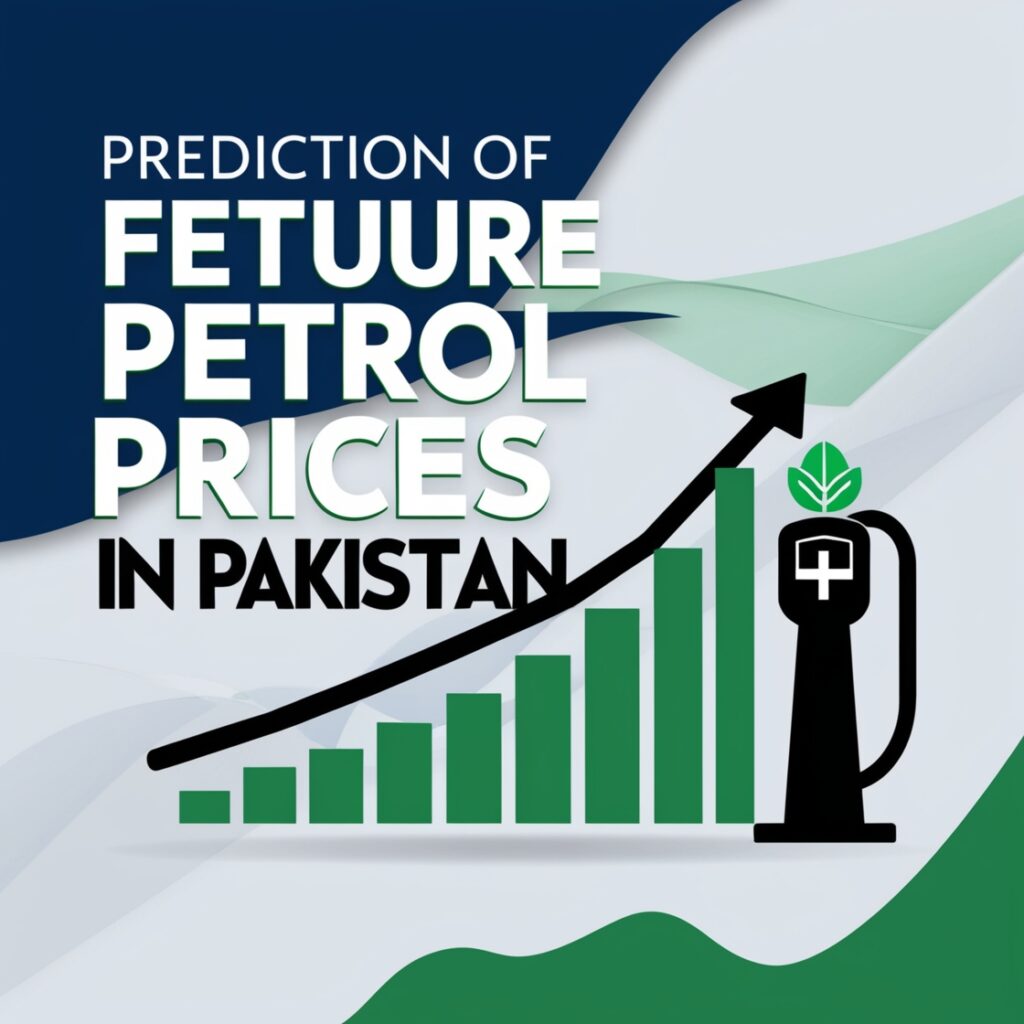
Predicted Price Changes
Projections in petrol pricing are often influenced by various domestic and international factors. As we approach 2024, analysts are forecasting fluctuations in the petrol price in Pakistan, currently set at PKR 248.38 per litre. Predictions suggest that petrol prices may experience moderate increases due to ongoing global oil market volatility.
Specifically, prices are anticipated to hover around PKR 250 to 260 per litre in the coming months, largely influenced by crude oil prices and currency exchange rates.
For example, high-octane petrol currently costs PKR 255.88, while diesel costs PKR 255.14. The prices of these fuels could also follow similar trends, particularly if the government decides to adjust taxes or subsidies in response to international oil price movements.
Economic and Political Factors
Several economic and political factors play a pivotal role in determining petrol prices in Pakistan:
- Global Oil Market Dynamics:
- Crude oil prices are subject to global supply and demand shifts, geopolitical tensions, and decisions made by major oil-producing countries. If OPEC+ countries choose to reduce production to stabilize prices, this could increase petrol prices in Pakistan.
- Local Currency Valuation:
- Fluctuations in the Pakistani Rupee against the US Dollar significantly affect fuel import costs. A weakening rupee can lead to higher fuel prices as Pakistan imports a significant portion of its oil needs.
- Government Policies:
- The Pakistani government’s decisions regarding taxation and subsidies will directly impact petrol prices. Any increase in the petroleum development levy or removal of subsidies can lead to immediate price hikes at the pump.
- Inflation Rates:
- Rising inflation can result in increased transportation and logistics costs, thereby influencing petrol prices. Higher overall inflation typically leads to adjustments in fuel prices to maintain profit margins for retailers and suppliers.
- Political Stability:
- Political uncertainty or instability can lead to market speculation about future price changes, potentially raising prices even before an official adjustment occurs.
What to Expect in the Coming Months
Consumers must remain informed as petrol prices fluctuate in response to the aforementioned factors. Here are actionable insights for readers to stay updated on petrol prices in Pakistan:
- Regular Monitoring:
- Keep an eye on reputable news outlets and fuel price websites for real-time updates on petrol prices. Setting up alerts for changes in petrol prices can be beneficial.
- Government Announcements:
- Follow announcements from the Ministry of Finance and the Oil and Gas Regulatory Authority (OGRA), as these entities are responsible for setting and adjusting fuel prices. Their announcements can provide advance notice of impending changes.
- Utilize Technology:
- Use mobile apps and online platforms that provide live updates on fuel prices. Many apps also offer notifications for price changes in your area, which can help budget fuel expenses effectively.
- Consider Alternatives:
- With fluctuating petrol prices, exploring alternatives such as carpooling, public transport, or switching to fuel-efficient vehicles can help manage transportation costs in the face of rising fuel prices.
- Stay Informed on Global Oil Trends:
- Understanding trends in the global oil market can provide context for local price changes. Websites and financial news sources focusing on energy markets can offer valuable insights.
By being proactive and informed, consumers can better navigate the changing landscape of petrol prices in Pakistan and make financial decisions that best suit their needs.
How Petrol Prices Impact the Pakistani Economy
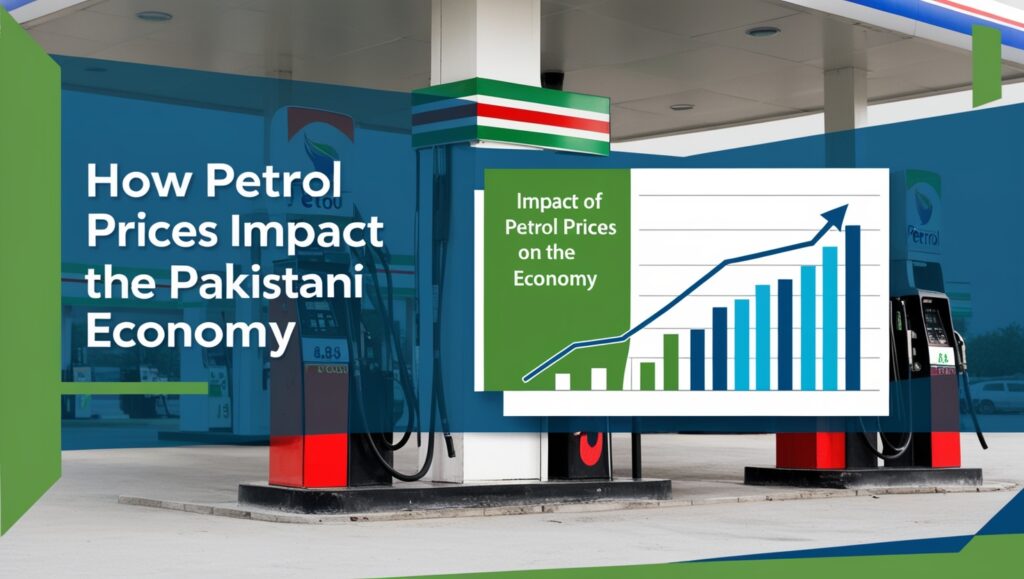
Effect on Transportation and Goods
Petrol prices play a pivotal role in determining the overall cost of transportation in Pakistan. When petrol prices rise, the direct impact is felt by consumers who rely on public transportation, private vehicles, and commercial goods transport. Higher fuel costs lead to increased fares for buses, rickshaws, and taxis, making daily commuting more expensive for the average citizen.
Rising petrol prices translate into higher costs for trucking and logistics companies for goods transportation. This increase is often passed on to consumers through higher prices for everyday goods, from groceries to electronics. The effect is widespread, influencing the pricing of various products across the market, thus altering consumer behaviour and purchasing power.
Latest Petrol Prices in Pakistan (2024):
- Regular Petrol Price: PKR 248.38 per litre
- High-Octane Petrol Price: PKR 255.88 per litre
- Diesel Price: PKR 255.14 per litre
The increase in fuel prices means that public and private transport providers must adjust their pricing models, ultimately affecting all sectors of the economy.
Impact on Inflation and Daily Life
Rising petrol prices are a significant contributor to inflation in Pakistan. As fuel costs increase, they elevate the cost of production and transportation for various goods and services, contributing to overall inflation. This scenario puts additional pressure on consumers, especially those with fixed incomes, as they struggle to manage their household budgets with the rising costs of essentials.
Inflation impacts daily life in multiple ways:
- Decreased Purchasing Power: As prices for goods and services rise, consumers find that their money does not stretch as far as it used to, forcing them to make difficult decisions about spending and saving.
- Increased Cost of Living: Families may have to allocate a larger portion of their income to cover transportation and food costs, leaving less for savings and other expenditures.
Rising petrol prices and inflation are cyclical, meaning that households may experience a diminished quality of life without effective management as they grapple with the financial strain.
Government Responses and Subsidies
In response to rising petrol prices and their impact on the economy, the Pakistani government has implemented various measures to stabilize or reduce fuel prices. These measures may include:
- Subsidies: The government sometimes introduces subsidies on petrol and diesel to cushion the financial burden on consumers. These subsidies can help keep fuel prices relatively low despite fluctuations in the global oil market.
- Price Control Mechanisms: Regulatory bodies may monitor and control fuel prices to prevent excessive increases, ensuring that price hikes remain manageable for the average citizen.
- Public Awareness Campaigns: The government often launches campaigns to inform citizens about price changes and the factors driving these changes. This transparency can help the public prepare for economic shifts and make informed financial decisions.
For example, when global oil prices surge, the government may delay passing on the full extent of these increases to consumers by absorbing some of the costs through subsidies or price controls. However, these interventions can lead to significant fiscal pressure on government budgets, requiring careful economic management.
How to Stay Updated on Petrol Prices in Pakistan
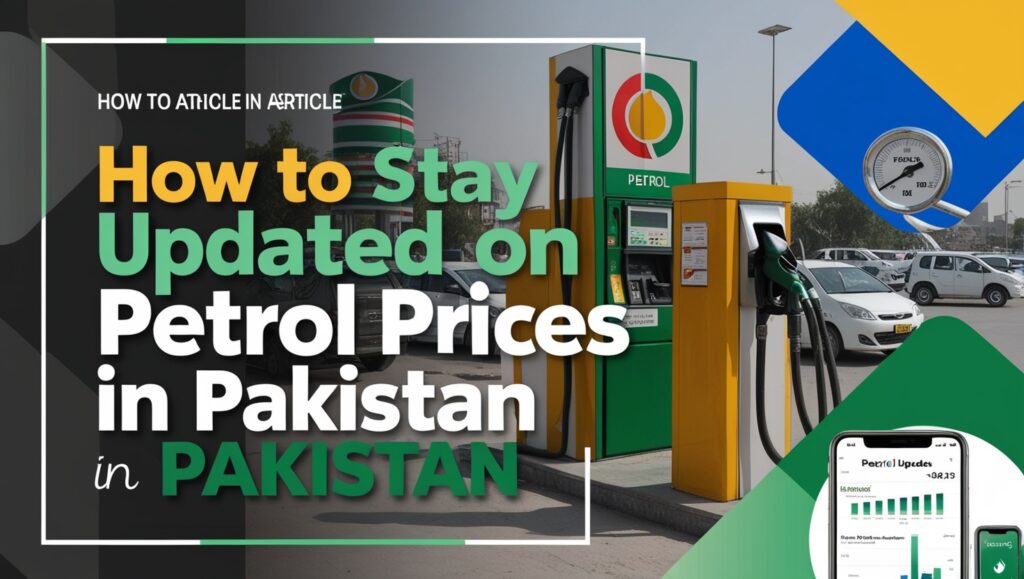
Staying informed about petrol prices in Pakistan is crucial for consumers, businesses, and anyone relying on fuel for transportation. With prices fluctuating frequently due to various factors, it is important to know where to find reliable and up-to-date information.
Reliable Sources for Price Updates
To ensure you’re getting accurate and current petrol prices, consider the following reliable sources:
- Government Websites:
- The Ministry of Finance and OGRA (Oil and Gas Regulatory Authority) regularly update petrol prices on their websites. Here are useful links:
- These sites often provide detailed breakdowns of pricing components, including taxes and distribution costs.
- News Outlets:
- Major news channels and websites, such as Dawn, The Express Tribune, and Geo News, frequently report on changes to petrol prices and analyze their economic implications.
- Social Media:
- Follow relevant government agencies and trusted news sources on Twitter and Facebook for real-time updates.
Using Online Tools and Apps
In addition to official sources, several apps and online tools can help you track daily changes in petrol prices:
- Fuel Price Apps:
- Petrol Prices: This app provides real-time updates on petrol prices across various cities in Pakistan. Users can set notifications for price changes.
- PakFuel: Offers insights into fuel prices and historical data, allowing users to analyze trends over time.
- Price Comparison Websites:
- Websites like PakWheels and Zameen.com sometimes offer fuel price tracking as part of their services, allowing users to compare petrol prices in different regions.
Don’t forget that The Price in Pakistan is an excellent resource for regular updates on petrol prices. Here’s how you can utilize it:
- Daily Updates: Check back frequently for the latest petrol prices, including special updates on new announcements or price hikes.
- Comprehensive Articles: Our site features in-depth articles discussing current prices and trends, government policies, and their impacts on consumers.
- Engagement: Feel free to comment or contact us with specific queries related to petrol prices or other commodities. We will strive to provide timely responses.
Latest Petrol Prices in Pakistan
As of the latest update, the current prices are as follows:
| Fuel Type | Price (PKR per litre) |
|---|---|
| Regular Petrol | 248.38 |
| High-Octane Petrol | 255.88 |
| Diesel | 255.14 |
By utilizing these sources and tools, you can stay well-informed about petrol prices in Pakistan and ensure that you are always prepared for any changes in fuel costs.
Conclusion
In conclusion, understanding the current petrol prices in Pakistan is crucial for consumers and businesses. As explored throughout this article, petrol prices affect individual budgets and have broader economic implications.
With the regular petrol price currently at PKR 248.38 per litre, high-octane petrol priced at PKR 255.88 per litre, and diesel at PKR 255.14 per litre, it’s clear that fluctuations in fuel prices can directly influence transportation costs, which in turn affect the prices of goods and services across the board.
Summary of Key Points
- Impact on Financial Planning: Knowing the current petrol prices allows individuals and families to better plan their budgets. With rising petrol costs, it’s essential to account for increased spending on transportation and related expenses. For businesses, understanding fuel costs is vital for pricing strategies and maintaining profit margins.
- Economic Ripple Effects: We’ve also highlighted how changes in petrol prices can lead to inflationary pressures, affecting everything from daily commutes to the cost of living. When petrol prices rise, consumers often face higher prices for food, goods, and services as companies pass on their increased transportation costs.
Encouragement to Stay Updated
Given the volatile nature of the oil market and the various factors influencing petrol prices, staying informed about any changes is essential. Regular updates can help you anticipate price hikes or drops and make informed travel, commuting, and budgeting decisions.
We encourage our readers to frequently visit our site for the latest updates on petrol prices in Pakistan. We provide real-time data and analysis to ensure you have access to accurate information that can assist in your financial planning. By staying informed, you can better navigate the challenges of fluctuating fuel costs.
Moreover, consider setting up alerts through reliable news sources or apps that provide real-time updates on petrol prices. This proactive approach ensures that you will always be aware of the most current rates, helping you make timely decisions regarding fuel purchases and travel plans.
Focusing on petrol prices and understanding their implications empowers you to make better financial decisions. Thank you for reading, and we hope you found this information helpful!
FAQs
What is the current petrol price in Pakistan?
The current petrol price in Pakistan is PKR 248.38 per litre for regular petrol and PKR 255.88 per litre for high-octane petrol.
How often does the petrol price change in Pakistan?
Petrol prices in Pakistan are typically revised every two weeks based on fluctuations in global oil prices and other economic factors.
Where can I find the latest petrol price updates in Pakistan?
The latest petrol price updates are available on news websites, government announcements, and dedicated platforms like The Price in Pakistan.
What factors influence petrol prices in Pakistan?
International crude oil prices, currency exchange rates, government taxes, and local market conditions influence petrol prices.
Is there a difference between petrol and diesel prices in Pakistan?
Yes, diesel prices are generally different from petrol prices. Currently, the diesel price in Pakistan is PKR 255.14 per litre.
How can I calculate my monthly fuel expenses based on current petrol prices?
To calculate your monthly fuel expenses, multiply the current petrol price per litre by the monthly litres you expect to use.
What is the impact of petrol prices on the economy?
Rising petrol prices can lead to increased transportation costs, affecting the prices of goods and services and impacting inflation and overall economic stability.
Are there any ongoing discussions about petrol price reductions in Pakistan?
Discussions about potential petrol price reductions often occur, especially during economic hardship or falling global oil prices. Watch the news for the latest updates.
What should I do if I notice a significant increase in petrol prices?
If you notice a significant increase in petrol prices, adjusting your budget, carpooling, or using public transportation to save on fuel costs may be wise.

